Byrsonima crassifolia - Nancy Tree or Golden Spoon
by Alex Butova, the Witch of Herbs and Cats
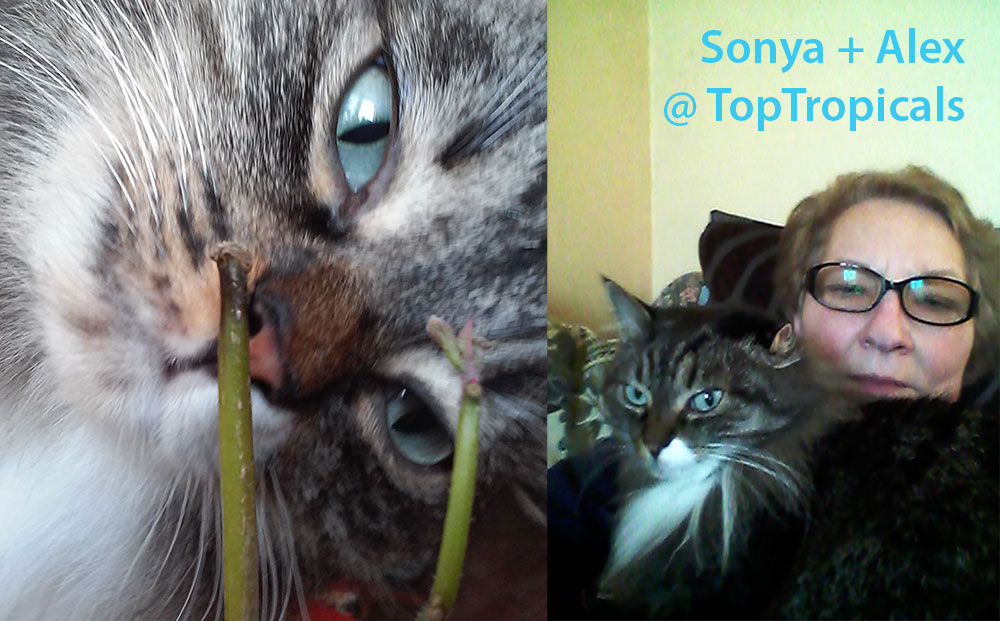 Alexandra Butova is our columnist, journalist, and photographer, living in Riga, Latvia. She has has been with TopTropicals since Day One (2002), writing about magic plants, travel, and of course cats - from the CatNation she belongs to. Alex is in charge of TopTropicals.ru website.
Alexandra Butova is our columnist, journalist, and photographer, living in Riga, Latvia. She has has been with TopTropicals since Day One (2002), writing about magic plants, travel, and of course cats - from the CatNation she belongs to. Alex is in charge of TopTropicals.ru website.
Pretty Fancy Nancy from Brazil
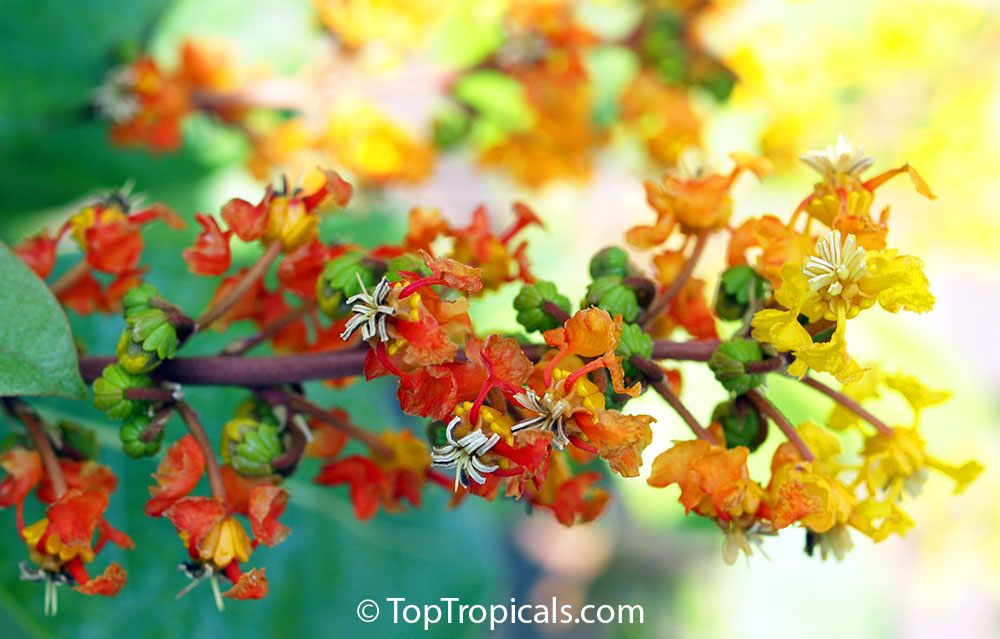
Once Dr. David Fairchild bought in Panama seeds of a fruit plant unknown to him, which looked a little like Acerola (Malpighia). When he asked what it was called, the woman who sold the seeds answered - Nance, wild cherries from Brazil! The famous horticulturist brought the seeds from Panama to the United States Department of Agriculture in 1899. A few of his specimens still exist in private collections in South Florida.
Byrsonima crassifolia is a species of a flowering plant bearing fruit in the Acerola family, Malpighiaceae, that is native to Tropical America and the Caribbean. It is native and abundant in the wild, sometimes in extensive stands, in open pine forests and grassy savannas. It is limited to tropical and subtropical climates and is not a common plant in cultivation.
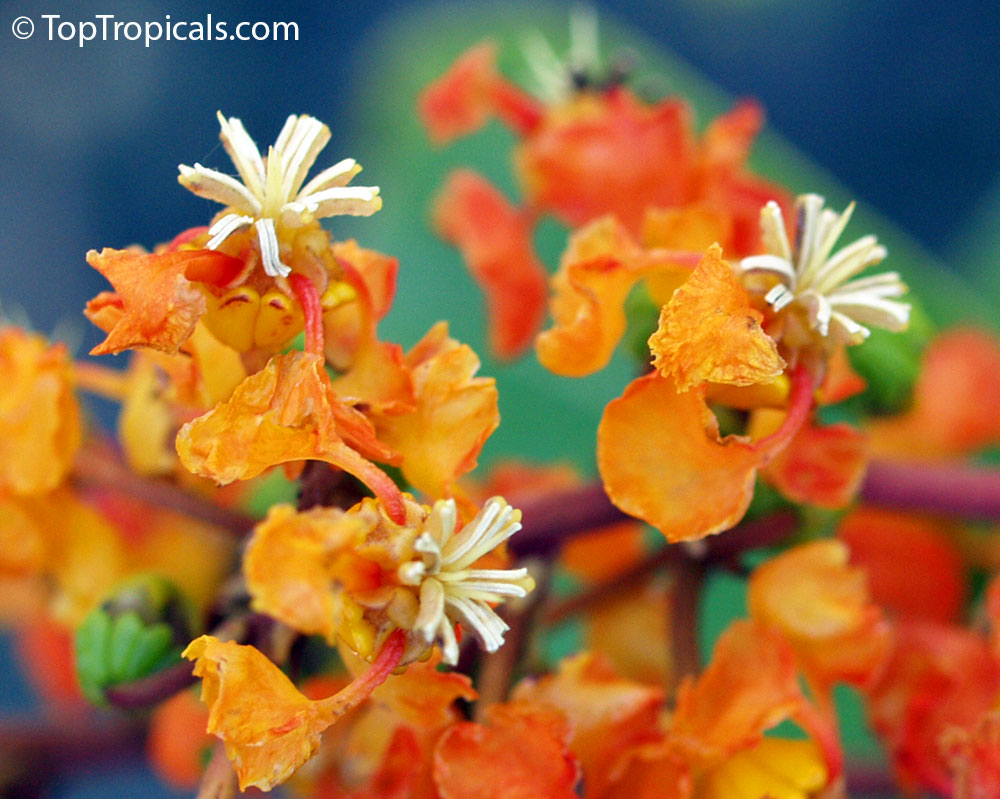
This plant has many local common names, more popular include Nance, Nanche, Nancite, Changunga, Murici, Savanna Serrette. English common names are Nancy Tree, Hogberry, Wild cherry and Golden Spoon.
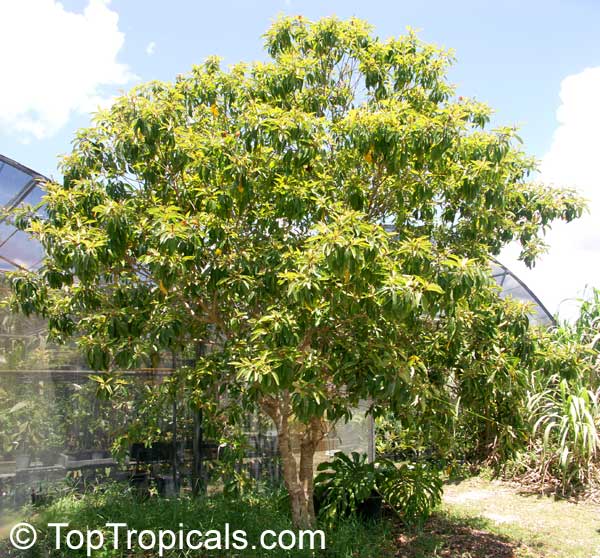
Byrsonima crassifolia grows into a large shrub or a small tree. Depending on the type and growing conditions, it develops into a shrub 10-16 ft tall or a small tree up to 30-35 ft with a short trunk supporting a wide spreading crown. The leaves are oval, up to 6" long, rounded or pointed at the tip, prominently veined, dark glossy green above, pale green or reddish-brown underneath and have a leathery texture. They are evergreen, very pretty, remaining on the plant throughout the year.
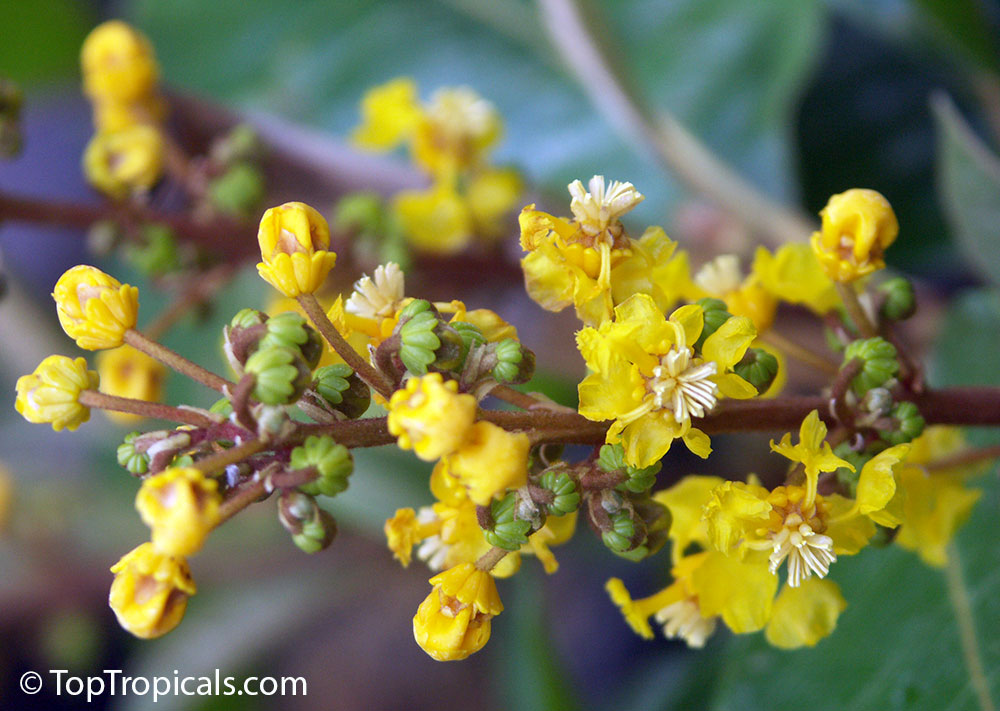
From spring to summer, which is the rainy season in its native range, small yellow flowers bloom in tubular-shaped clusters at the ends of the branches. They change color as they age, from yellow to orange then red, adding to their ornamental interest!
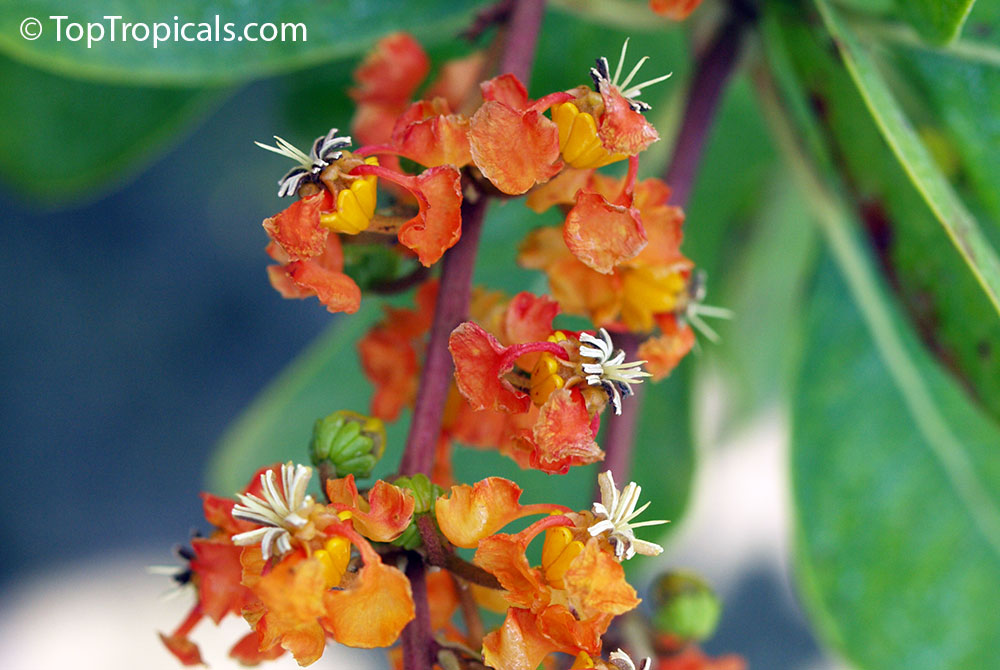
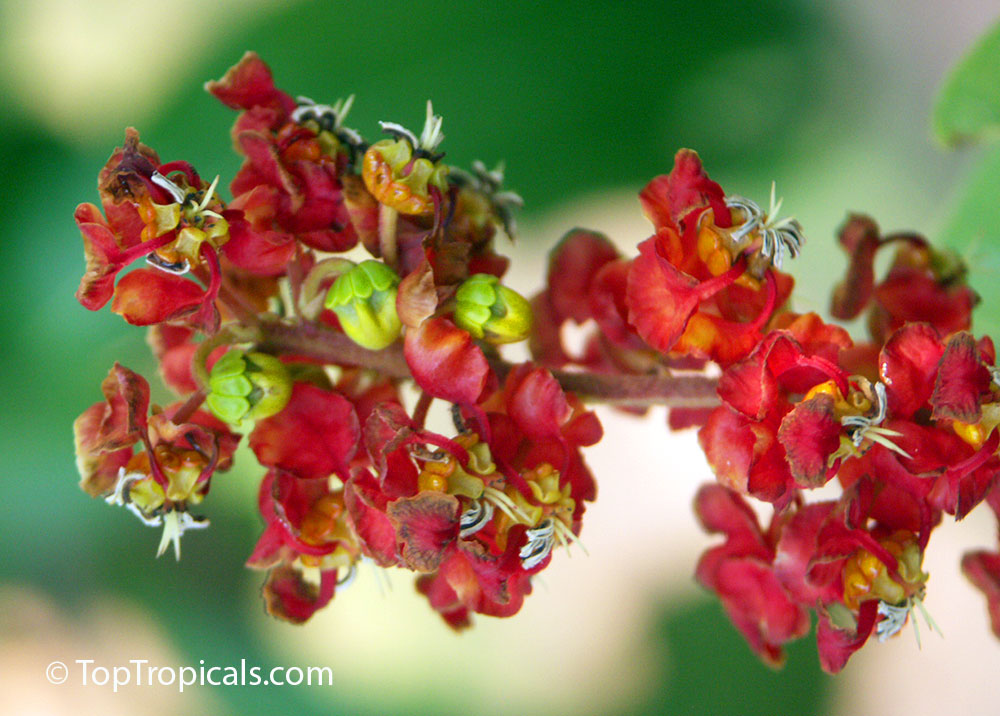
The flowers are succeeded by small, near round fruit, 1" in diameter with thin green skin that turns yellow or pale orange when ripe, mainly in summer to autumn. The pulp is near white, juicy, oily and clings to a large, hard stone that encloses one to three seed. The taste of the fruit has been described as combination of pear, lychee and banana. When jarred, the texture resembles that of a green or kalamata olive. The fruits have nice smell and attract butterflies, bees and birds.
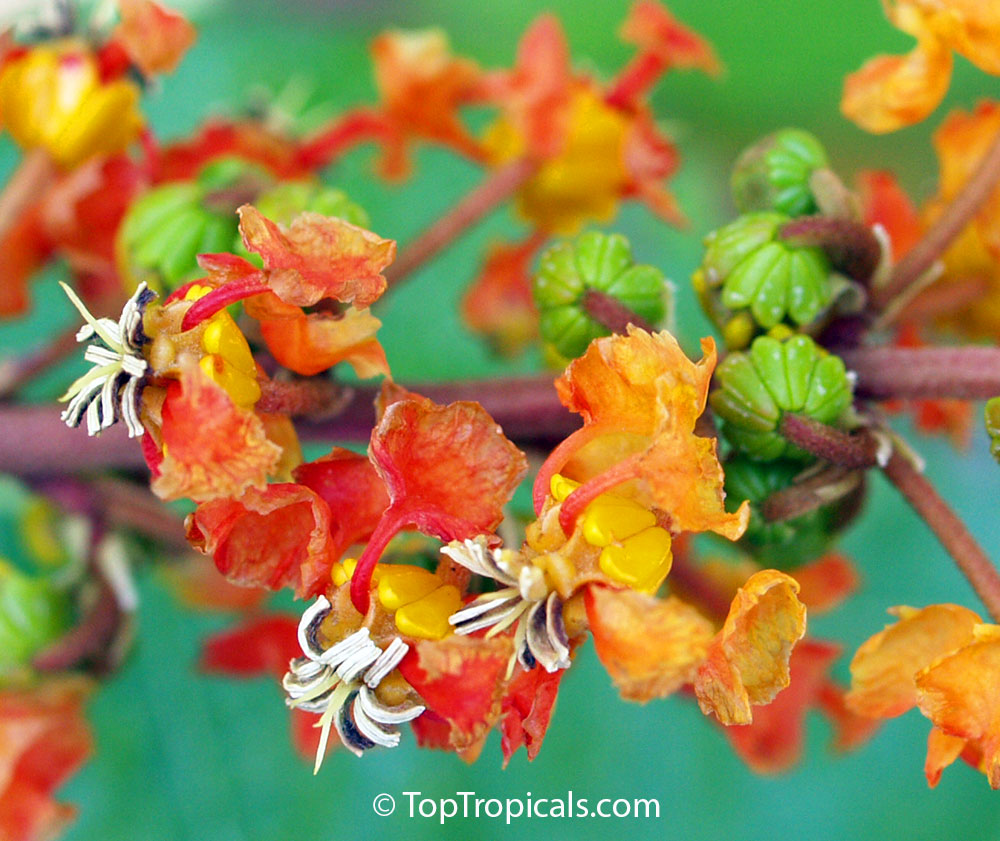
The fruit are used to flavor beverages, syrups, cordials, popsicles and milk-based desserts, including ice cream and yogurt. They may be included in soup or in stuffing for meats. The fruit are also preserved whole in syrup and are made into jams and jellies.
Nancy Tree fruit are not only delicious, but also very useful, they are widely used by many local people for medicinal purposes and include all of Vitamins B, Vitamin C, Vitamin K, Vitamin E, Calcium, Cooper, Iron, Magnesium, Manganese, Phosphorus, Potassium, Sodium and Zink. The whole multi-vitamin prescription in one fruit!
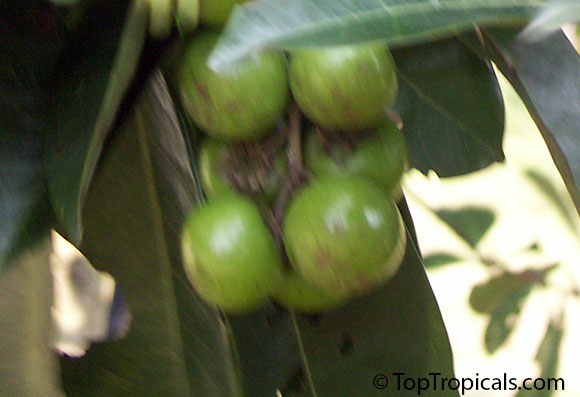
Recent medical studies have confirmed that Byrsonima crassifolia is a good source of antioxidant compounds. An antioxidants activities of plant extract protect cells and to prevent oxidative effects in aged brains and could be considered as a strategy in the treatment of pathologies related to aging and cortical spreading depression.
Invite Pretty Fancy Nancy to your garden, and never see Uncle Alzheimer! Moreover, you will get an easy-to-care beautiful plant bearing delicious fruit.
Cultivation
Cultivation is super easy. The plant is vigorous and relatively fast growing, not fussy about conditions and soil, and somewhat cold hardy. It is highly drought-tolerant.
You can grow this plant in a pot in colder climates, inside a greenhouse or brought indoors during Winter. As long as it is protected from freeze and gets plenty of light, it will be happy.
Nancy Tree is a compact plant, grows into a small tree or a bush, so it can be trimmed to desired size.
It can grow in 3-7 gal container for several years and may need 15 gal size eventually.
Give the plant plenty of light especially in Summer, bring it outside to enjoy sun and humidity when temperatures get above 40F.
Recommended fertilizers:
SUNSHINE C-Cibus - Crop Nutrition Booster
Mango-Food - Smart Release Fruit Tree Booster
SUNSHINE-Honey - sugar booster
